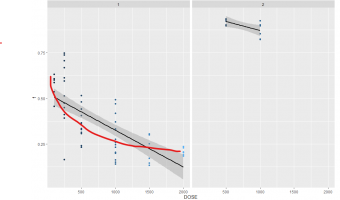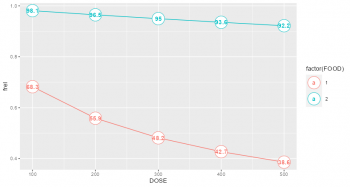Hi,
I see no one ask similar questions. Do you have any suggestions for the PML if I believe there are some interactions for covariates.
See the graph below that I think dose is correlated with f, while in fasted (1,left) and fed (2, right), the correlation (or slope extent) is different.
I have tried to regard them as separate covariates:
stparm(f = ilogit(tvf + DOSE*dfdDOSE+ (FOOD==2)*dfdFOOD2 + nf))
however the prediction is leveraged in lower and upper end of the dose.
Do you have advise for PML to describe this, I use the following but might be good to have more suggestion?
stparm(f = ilogit(tvf + DOSE*dfdDOSE1 + DOSE*dfdDOSE2 * (FOOD==2)*dfdFOOD2 + nf))
















